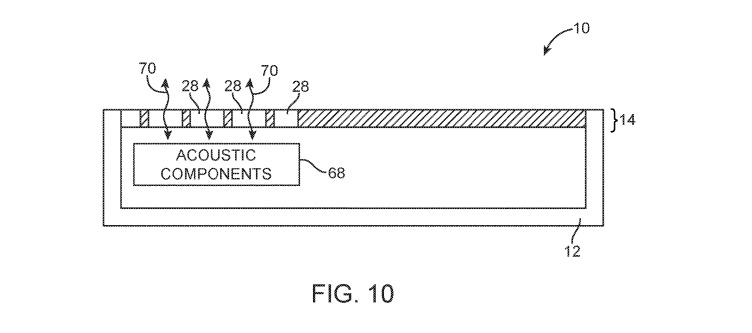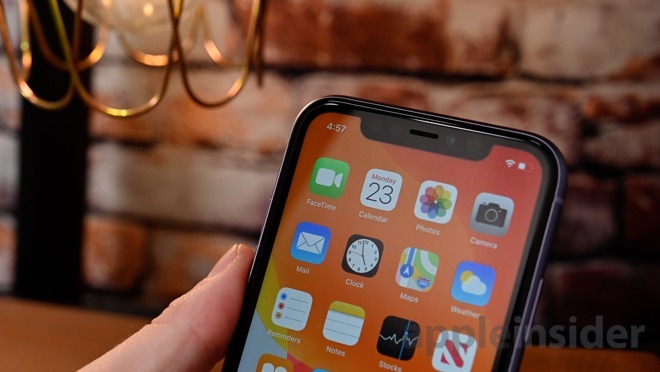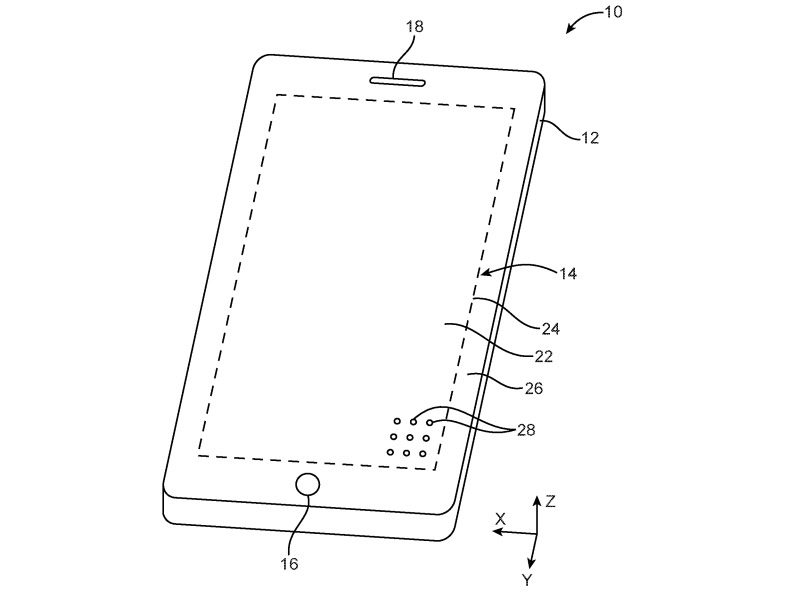The infamous notch at the top of the current generation of iPhones could be eliminated in a future version, with Apple looking into including openings in the display itself that cameras, speakers, and other sensors could be positioned behind, providing them with access to the outside world while minimizing their appearance.
Since the introduction of the notch in the iPhone X, device producers have attempted to come up with ways to maximize the screen size while managing the need to include certain types of components. Aside from cameras, as with the TrueDepth array, manufacturers also have to find ways to include other elements, such as physical holes to allow microphones and speakers to function.
It's these physical openings that make a full-screen smartphone hard to produce. Sure, areas of a display panel could be excluded to make a porthole for a camera to see through while maintaining the smooth appearance of the front glass, but for holes there isn't any way to easily hide their existence.
In a patent granted by the U.S. Patent and Trademark Office on Tuesday titled "Electronic devices having displays with openings", Apple proposes the inclusion of openings in the display that fit between pixels to minimize their impact. Components are then mounted within the device's casing behind the display to align with the gaps.
 How holes in the OLED panel could allow acoustic components like speakers and microphones to function
How holes in the OLED panel could allow acoustic components like speakers and microphones to functionApple claims it could use OLED technology, which would allow for the display to function with cutouts far easier than LCD due to the pixels being self-illuminating, so eliminating the need to add a backlight to the display stack. The display would also include the use of thin-film transistor circuitry, and a layer of sealant.
Depending on the component behind the display, there may be the use of a color filter material to block specific wavelengths of light, or to help transmit certain types. This could be useful for elements like the TrueDepth camera array, which relies on infrared to project dots onto the user's face.
It is also suggested the technique could be used to enclose an interior cavity featuring a light sensor and an overlapping display. The display would include a "light-transmitting window" interposed between pairs of pixels, with light reflected to the light sensor. This would in theory enable the creation of Touch ID that works through a display.
Apple files numerous patent applications on a weekly basis, but while the existence of a filing may indicate areas of interest for the company, it is far from guaranteed that it will appear in a future product or service.
The idea of hiding components behind the screen certainly isn't new to Apple.
One patent application from August suggested the use of "light transmitting windows," namely areas where components are placed behind an OLED panel in such a way that areas of the display do not self illuminate when the component is in use, enabling a camera to see the world or the user, for example. The sections could also feasibly be produced to be more transparent than other areas, keeping the display as optimal as possible for normal use.
In May, a patent application proposed the use of holes in a display and light reflections to a light sensor as part of a Touch ID system, again hiding it behind the display.
 Malcolm Owen
Malcolm Owen








-m.jpg)







 Charles Martin
Charles Martin


 Mike Wuerthele
Mike Wuerthele
 Christine McKee
Christine McKee



-m.jpg)






28 Comments
But, but, but... What then will the NotcHeads have to complain about?
The notch keeps them busy and out of trouble.
#KeepTheNotch!
keep the genius coming.
All of this to get around having a little bit of bezel. Really, really stupid. lkrupp
I wouldn't go that far. Every single developer cares. The notch is the stupidest thing to ever come to the concept of the computer display. And only arrogant Apple could get away with it.